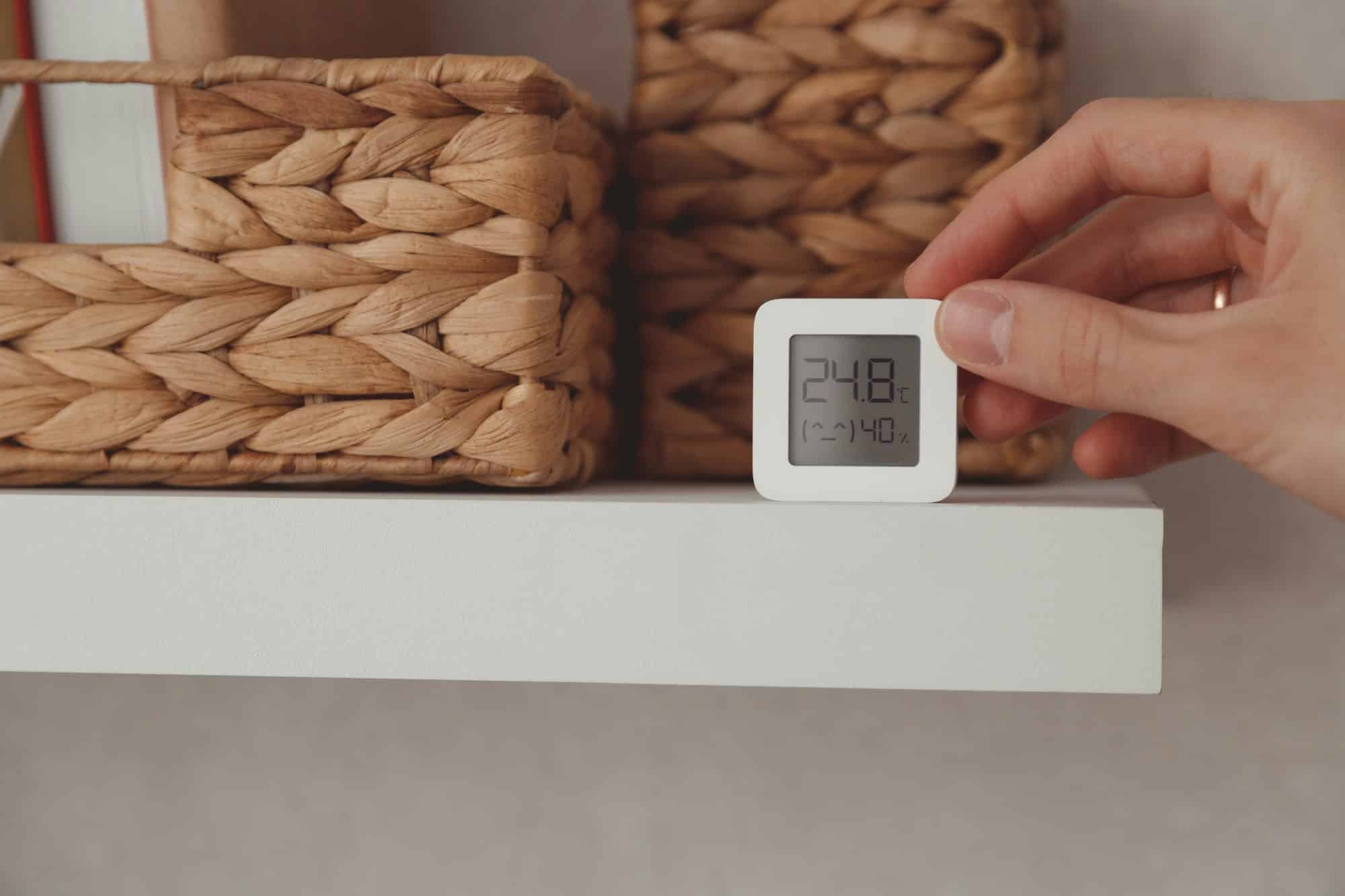What’s the Best Way to Create a Humidity-Controlled Closet for Sensitive Clothing?

Sensitive clothing, such as vintage pieces, leather, and silk, requires special care and attention. One often overlooked aspect of this care is humidity control. Too much humidity can cause mold and mildew, while a lack of it can make fabrics dry and brittle. But worry no more. We’re here to guide you on how to create a humidity-controlled closet to protect your delicate garments.
Understanding the Need for a Humidity-Controlled Closet
Before we dive into the process of creating a humidity-controlled closet, it’s essential to understand why such a closet is needed.
Lire également : What Are the Best Acoustic Solutions for High Ceilings in an Open Plan Living Space?
Humidity refers to the amount of water vapor present in the air. High humidity levels can lead to the growth of mold and mildew, which can damage sensitive clothing. On the other hand, low humidity levels can dry out and weaken fabrics, leading to cracks and tears. Therefore, maintaining an optimal level of humidity is crucial in preserving the longevity and quality of sensitive clothing.
A humidity-controlled closet provides a safe and stable environment for your clothes. By carefully controlling the humidity levels, you can prevent any potential damage and maintain the integrity and appearance of your clothes for many years to come.
A lire également : How Can You Implement an Off-the-Grid Sewage Treatment System in a Rural Home?
Identifying the Optimal Humidity Level
The first step in creating a humidity-controlled closet is identifying the optimal humidity level for your sensitive clothing.
In general, the optimal humidity level for most clothing is between 45% and 55%. This range is often considered the "comfort zone," as it effectively prevents the growth of mold and mildew without drying out the fabrics. However, this can vary depending on the specific type of clothing. For instance, leather requires a slightly lower humidity level, typically around 40% to avoid molding or discoloring.
Therefore, it’s essential to research the specific needs of your clothing to determine the best humidity level. Once you have this information, you can then proceed to create a humidity-controlled environment that meets these specific needs.
Selecting and Installing a Dehumidifier
Once you’ve determined the optimal humidity level for your clothing, the next step is to control the humidity within the closet. This is where a dehumidifier comes in.
A dehumidifier is a device that removes excess moisture from the air, thereby reducing the humidity level. There are various types of dehumidifiers available in the market, ranging in size and capacity. When selecting a dehumidifier, consider the size of your closet and the amount of clothing you’ll be storing.
Once you’ve selected a suitable dehumidifier, the next step is to install it. This typically involves placing the dehumidifier in an optimal location within the closet, ensuring it’s not obstructed and has enough space to operate efficiently.
Setting up and maintaining the dehumidifier is critical. You’ll need to regularly check and empty the water reservoir or connect it to a proper drainage system. Also, you’ll have to clean and replace filters periodically to keep the device functional and effective.
Incorporating Hygrometers for Continuous Monitoring
When you’ve got your dehumidifier up and running, it’s essential to have a way to monitor the humidity levels continuously. This is where hygrometers come in handy.
A hygrometer is a device that measures the amount of moisture in the air. By installing a hygrometer in your closet, you can continuously monitor the humidity levels and adjust the dehumidifier settings as necessary.
Hygrometers come in both analog and digital forms. Digital hygrometers are generally more accurate and can even alert you when humidity levels are outside the desired range. When installing a hygrometer, be sure to place it in a location where it can accurately measure the overall humidity level of the closet.
Regular Maintenance and Checks
After setting up your humidity-controlled closet, regular maintenance will ensure its effectiveness in maintaining the right humidity levels.
This maintenance involves regular checks on the humidity level, keeping the closet clean, and checking for signs of mold or mildew. Regularly cleaning the closet can prevent dust buildup that may interfere with the dehumidifier’s operation.
Also, consider rotating the clothes in the closet from time to time. This will allow for an even distribution of air and prevent any damp spots from forming.
Creating a humidity-controlled closet for sensitive clothing may seem daunting at first, but with careful planning and due diligence, it becomes a manageable task. By following the steps outlined above, you can ensure your delicate clothing pieces remain in optimal condition. Remember, like fine wine, good clothing only gets better with age when stored properly.
Choosing the Best Closet Materials
The material of your closet plays an essential role in maintaining the desired humidity level. Certain materials, such as metal and plastic, can create a non-breathable environment that can trap moisture, leading to mold and mildew.
On the other hand, using a closet made from breathable materials like natural wood can help maintain a balanced humidity level. Wood absorbs and releases moisture, naturally regulating humidity levels in the closet. However, make sure the wood is untreated as treated wood can emit volatile organic compounds (VOCs) that can harm delicate fabrics.
When deciding, consider the type of clothing you’ll be storing. For example, vintage clothing or clothing made from natural fibers like cotton, silk, or wool, will benefit immensely from a wooden closet due to its natural humidity control properties.
But remember, any closet material will require regular maintenance to ensure its functionality. For a wooden closet, you may need to apply a breathable sealant to protect it from potential moisture damage. Always ensure that your closet remains clean, well ventilated, and free from potential water leaks.
Using Silica Gel Packs
For an added layer of protection against humidity, consider using silica gel packs. These small packets contain silica gel, a substance known for its ability to absorb moisture.
Place a few of these packs in your closet, especially in corners or areas that don’t receive much air circulation. The silica gel will help maintain a stable humidity level by absorbing any excess moisture in the air.
These packs are easily available, inexpensive, and safe to use around clothing. However, they do need to be replaced periodically as their moisture-absorbing capability diminishes over time. You can usually tell when the silica gel packs are saturated as they change color.
Using silica gel packs along with a dehumidifier and hygrometer can provide a comprehensive solution to controlling humidity levels in your closet.
Conclusion
Creating a humidity-controlled closet for sensitive clothing doesn’t have to be a daunting task. With the right tools and strategies, such as a dehumidifier, hygrometer, appropriate closet material, and silica gel packs, you can effectively maintain an optimal humidity level.
Remember, each piece of clothing may have its unique requirements, so research and understanding these needs are key. Once you’ve established a system, regular maintenance and checks are vital to ensure the longevity and quality of your clothing.
While this may seem like a lot of effort, the benefits are undeniable. Not only will your clothing last longer, but it’ll also look better. Protecting your sensitive clothing from damaging humidity levels is an investment in preserving the quality, integrity, and beauty of each piece. So, take the time to implement these strategies, and you’ll be rewarded with well-preserved garments that can be treasured for many years to come.
